Notes on the book "Art & Fear" by David Bayles & Ted Orland
Art & Fear is “a book about making art”. It covers the long term strategies that the authors have seen in successful artists.
The things that I learned from this book fell into three categories:
-
Methodical dedication to your art is the key to improving as an artist.
-
Advice for making art that applies equally well to programming.
-
Questions to ask about art.
Methodical dedication to art
If you read nothing else in the book, this is the one thing you must read:

As someone who had an ever-growing pile of unfinished personal projects, that fable really struck home for me. Shifting my focus from making “perfect” things to just making things has really helped me get more of my side projects done.
Here are some other selections from the book on this topic:

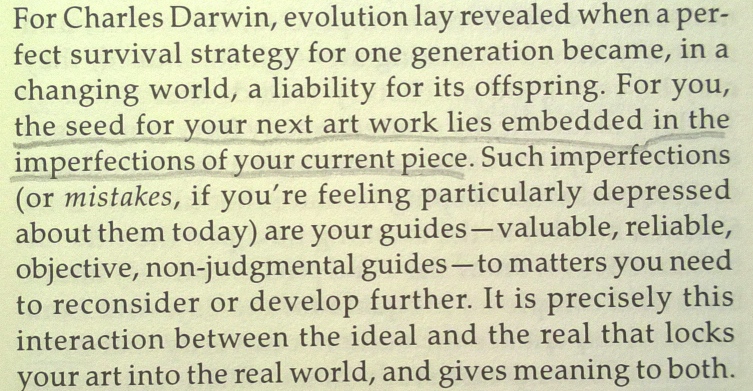

And finally, some great advice on how to make progress on your art:

Programming as art
I didn’t expect a book about art to have advice that applied to programming. I found it oddly comforting to see how artists face many of the same fears and issues that programmers do.
Here are some quotes on what people in the technical community refer
to as “Imposter syndrome”

“Fear that you are not a real artist causes you to undervalue you work”
The book also covers the fear that others have an innate talent which you lack. It has a whole section on this fear, which these quotes summarize nicely:
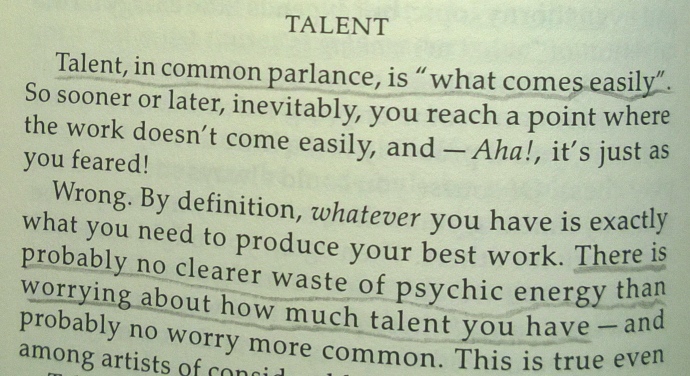
“Talent may get someone off the starting blocks faster, but without a sense of direction or a goal to strive for, it won’t count for much”
I also liked the quote “Art, after all, rarely emerges from committees” which reminded me of the big difference between programming languages designed by committees and those designed by “artists”.
Speaking of programming languages, the books spends a lot of time talking about “the materials of art”. The things it has to say about those “materials” is facinating if you replace “materials” with “programming languages” and assume that the “tools” they refer to are software development tools, for example:
“some materials are so readily charged and responsive that artists have turned to them for thousands of years”
“What counts, in making art, is the actual fit between the contents of your head and the qualities of your materials”

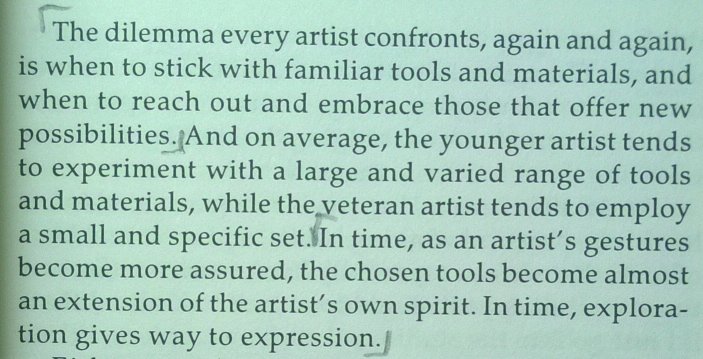
There is also some more general advice on the art of programming:

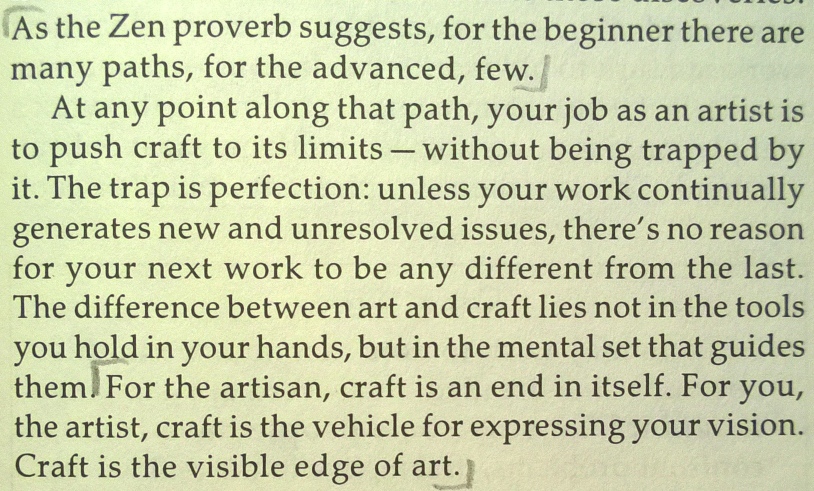
Lastly, I was struck with how much this quote reminded me of what it’s like to look at your own old code:
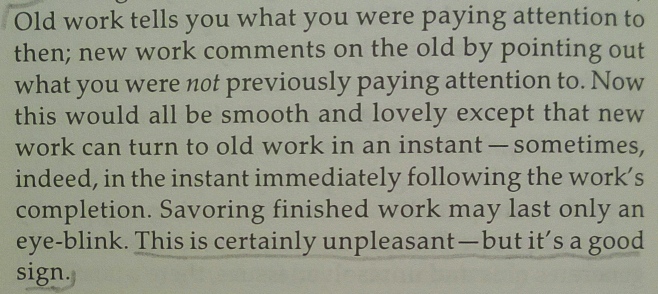
Questions to ask about art
The book pointedly distinguishes between art criticism and art creation:
“To the critic, art is a noun […] To the artist, art is a verb”
It then goes on to give a great framework for artists to use when they are considering other artist’s work:
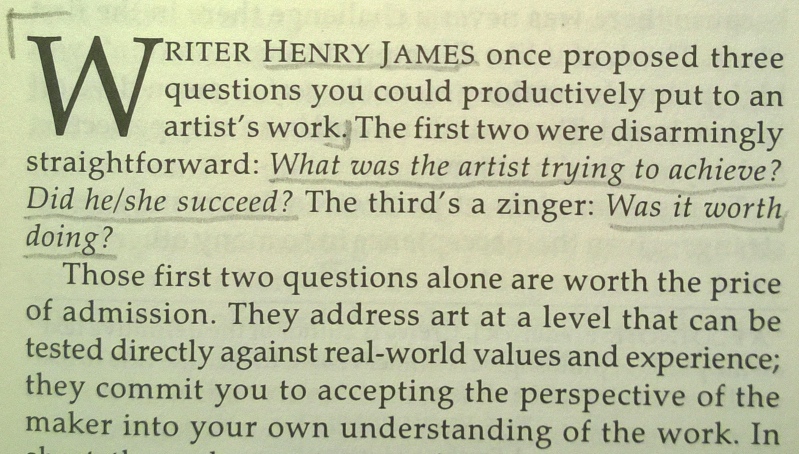
Fun quotes
Finally, this book also has some fun quotes that don’t fit into the three catagories covered above. These are included below:

I seem to remember Steve Jobs telling a group of naysayers something similar to the quote below:


Comments? Suggestions?
Please contact me if you have any comments on Art & Fear or on my notes thereof. Also, I’d love to know about other books, articles, videos, etc on these topics. Thanks!